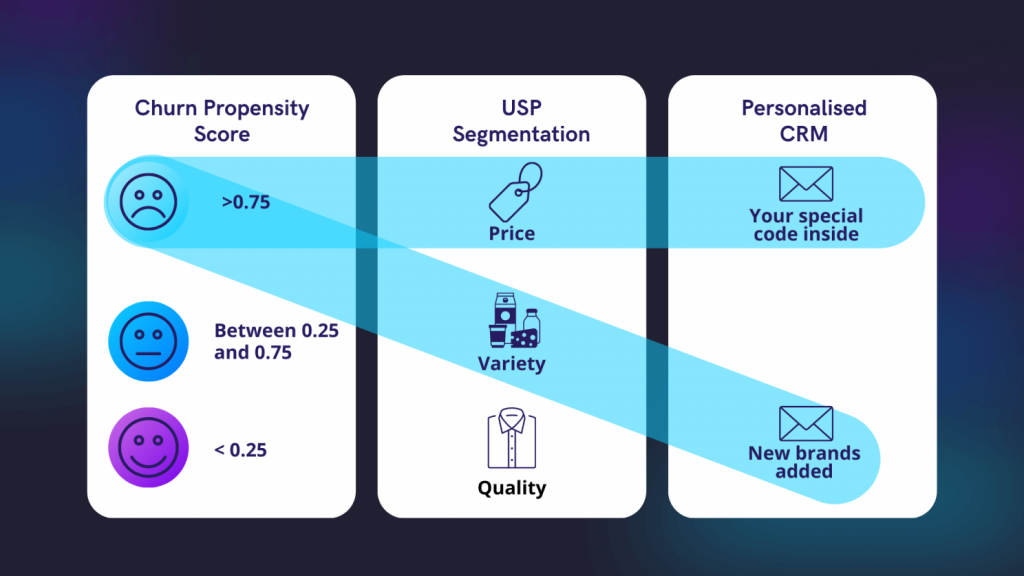Activating Your Customer Data
Customer data can be an invaluable asset that can provide companies with insights into their customers’ behaviours, preferences, and needs. By analysing this data, companies can tailor their marketing campaigns, improve customer experiences, and ultimately boost their bottom line. However, simply collecting customer data is not enough! Your data needs to lead to key decisions and so in this article we give you three examples of how to activate data models.
Churn Prevention
Churn Propensity + User Segmentation => Customised CRM
When it comes to user churn, similar to health concerns, prevention and early intervention are way more effective than trying to bring someone back to life.
Your churn propensity model will alert you when users are showing ‘early symptoms’, detected by a change in behaviour patterns and user state. Your segmentation model then provides a targeted response based on their unique characteristics.
For example, if you are an e-commerce platform selling clothing online and have segmented your user base by three unique selling points (USPs): variety, quality and price competitiveness. Your prevention email for high churn propensity users who sought variety can read: “We have added new brands, come and check them out!” vs. price conscious consumers “Your special code inside!”. For those who did not react to the first message, add a follow up CRM mechanism with increased level of intervention.
Don’t forget to apply A/B testing methodologies when designing and continuously improving your CRM strategies.

LTV Prediction + Marketing Budget Optimisation
This is the single biggest ROI data science project every company should be doing. We have seen wild successes beyond clients belief with the following approach.
- Create your own centralised single customer view (SCV). This will give you visibility on each user’s demographics, acquisition source, and all subsequent interactions with your product and CRM.
- Build LTV prediction models on individual customer levels based on historical and live data collected in your SCV.
- Use predicted LTV as an immediate signal to optimise your marketing spend on Facebook or Google.
By factoring in models such as lifetime value you can understand the real return on investment from ads and optimise towards customers who will pay off in the long-run, and not just their first purchase.
Spice It Up With User Segmentation + Audience Selection
High LTV users come in different forms, and so should your acquisition strategy.
Let’s reuse the USP segmentation example above from the e-commerce site.
You might create three separate Facebook Lookalike Audience for each USP segment. In the ad for a design of customers in a ‘quality-driven audience’, use more inspirational materials such as how you selected new brands during the latest Milan Fashion Week. For ‘price-driven audiences’, opt for a more direct copy such as “best price guaranteed!”.
If you have also done your homework on LTV per segment, you know how much different types of audiences are worth to you. You can assign bid strategies accordingly and maximise the collective LTV on your campaign.
Conclusion
Above are just a few examples of how data models can be activated, but the potential is endless. For example, AB testing can be applied and combined with any aspect of your products and services. You could create specific landing pages and conversion funnels targeting certain user segments.
How do you get there? You need a robust data structure and processes in place, with your key business concepts modelled in a data warehouse.
If you’d like to get more value out of your data or need to get started, why not talk to the friendly team at 173tech?


